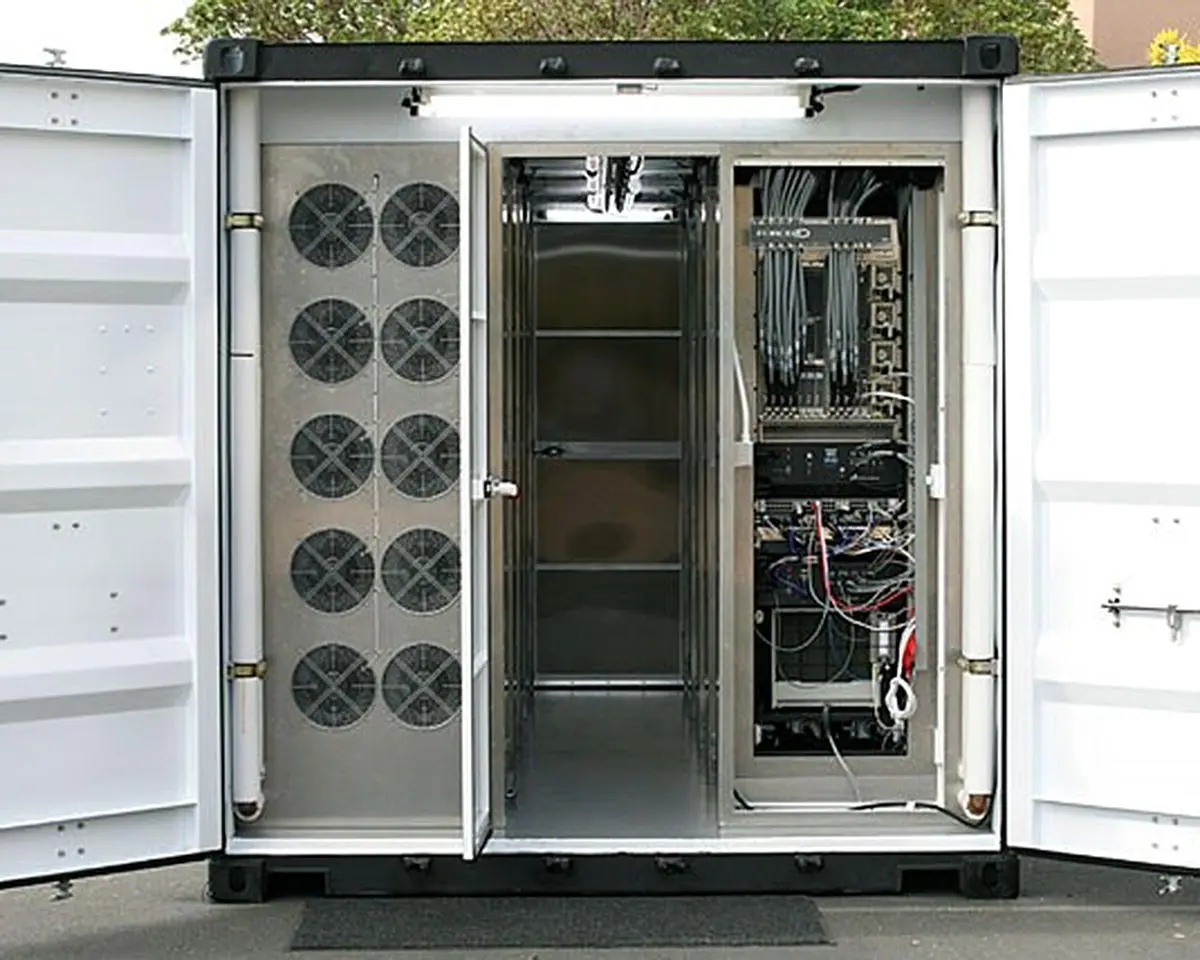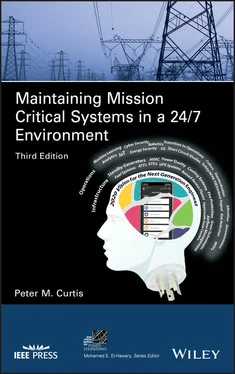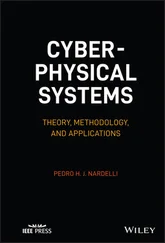(Courtesy of PMC Group One, LLC.)
Looking to the future, global work on fusion reactors has demonstrated that future power generation should be DC. For long‐distance distribution, High Voltage DC systems are less expensive and suffer lower electrical losses. High‐temperature superconductors promise to revolutionize power distribution by providing near‐lossless transmission of electrical power. The development of superconductors with transition temperatures higher than the boiling point of liquid nitrogen has made the concept of superconducting power lines commercially feasible, at least for high‐load applications. It has been estimated that the waste would be halved using this method since the necessary refrigeration equipment would consume about half the power saved by the elimination of the majority of resistive losses. Some companies, such as Consolidated Edison and American Superconductor, here in the United States, have already begun commercial production of such systems. Many people are unaware that superconductors are already being used commercially to construct the ultra‐strong magnets used in magnetic resonance imaging (MRI) scanners.
All the advantages and benefits of the DC alternative are yet to be proven over time. The industry must continue the dialogue and take steps to ensure the concept is thoroughly vetted. Small‐scale demonstrations are a good first step. Pentadyne, a leader in flywheel energy storage, assembled the first bench test at their Chatsworth, CA headquarters in 2005. An industry group sponsored by the California Energy Commission through Lawrence Berkeley National Labs and headed by EPRI Solutions and Ecos Consulting is planning more demonstrations of data center applications. Commercial proof‐of‐concept demonstrations are also being conducted in Sweden and Japan.
While retrofitting existing facilities for DC may not be cost‐effective in the near term, the DC alternative should be thoroughly investigated when designing a new data center. The increase in efficiency and the associated reduction in operating costs will be the primary driving force behind a DC revolution. And the fact that DC promises higher tier ratings with lower capital costs makes improved reliability another big attraction. As with any change that upsets the status quo, the conversion to DC will no doubt meet with opposition, but the benefits seem too irresistible to pass up.
3.12 Containerized Systems Overview
When you hear the term containerized systems, modular data centers are probably the first technology to come to mind. Initially, the primary purpose of this technology was aimed at disaster recovery operations. However, with the increasing challenges of high‐density computing, including cooling, power distribution, and the continual expansion of facilities to meet customer needs, containerized systems and modular infrastructure have emerged as an innovative solution to these problems.
Several vendors offer fully containerized data centers housed in a trailer‐like enclosure, marketed as both a rapid expansion solution, and for some companies, a complete data center architecture. The units are fitted with specially designed racks and chilled water‐cooling units. Electrical power, chilled water, and network connections are all that is required to commission a complete data center. These modules can be connected to a centralized power/cooling plant, or each can be individually equipped with their own dedicated power and cooling systems. This is proving to be a quintessential “plug and play” solution because it allows companies to forecast accurately and efficiently expand their data centers to meet computing needs. Energy efficiency is reported to be higher than traditional data centers; due in part to the compact high‐density design. As a result, companies such as Google and Microsoft are finding this technology to be invaluable.
It is important to note that modular systems can include an array of technologies not solely restricted to a shipping container. It also incorporates modularized infrastructure such as prefabricated UPS rooms, and chiller and generator containers. The benefit of these prefabricated solutions is that the quality of construction of these products is higher and more controlled than on a chaotic construction site, therefore ensuring more reliable equipment. Additional benefits include easy integration to existing sites, reduced costs of construction, and portability, and flexibility of relocation.
The offsite UPS container can be assembled while the data center building enclosure is being built, bringing data center speed to market. The typical container can house both a UPS‐A and UPS‐B system with batteries and associated input and output switchboards. The UPS container can be matched with an equivalent generator “block” and a cooling module “block,” making data center expansions relatively easy. This type of construction is typically called block load design, and blocks can be added as data centers are populated and need more power and cooling for the IT rollouts. The major benefit is that it allows valuable interior areas that would have been needed for the UPS’s and utility power transformers and switchgear to be used as white space for additional IT equipment, while the UPS’s, generators and utility power are outside, adjacent the building. Data center operators have also maximized data center white space by placing containerized pump houses and chillers on the roofs of data centers.

Figure 3.12Open rear door of containerized Data Center
(Courtesy of Sun Corporation.)
3.13 Mission Critical Engineering with an Overview of Green Technologies ‐ Questions to Consider
Designing or managing a mission critical facility is not a role to be taken lightly. As technology continues to develop and advance, critical data centers, hospitals, disaster recovery sites, and other mission critical facilities are only going to become more complex.
I’ve included some questions in this section of the chapter to help you assess the status of your facility. Take care when answering these questions and use them as a guide to improve your operations.
1 Is your organization sure that there is diversity in the labor pool of the primary and backup sites, such that a wide‐scale event would not simultaneously affect the labor pool of both sites?
2 Do you routinely use or test recovery and resumption arrangements?
3 Are you familiar with National Fire Protection Association (NFPA) 1600 – Standard on Disaster/Emergency Management and Business Continuity Programs, which provides a standardized basis for disaster/emergency management planning and business continuity programs in private and public sectors by providing common program elements, techniques, and processes?
4 Has the owner, working with an engineering professional, developed a Design Intent Document to clearly identify quantifiable requirements?
5 Have you prepared a Basis of Design document that memorializes, in a narrative form, the project intent, future expansion options, types of infrastructure systems to be utilized, applicable codes and standards to be followed, design assumptions, and project team decisions and understandings?
6 Will you be provided the opportunity to update the Basis of Design to reflect changes made during the construction and commissioning process?
7 Are the criteria for testing all systems and outlines of the commissioning process identified and incorporated into the design documents?
Читать дальше













